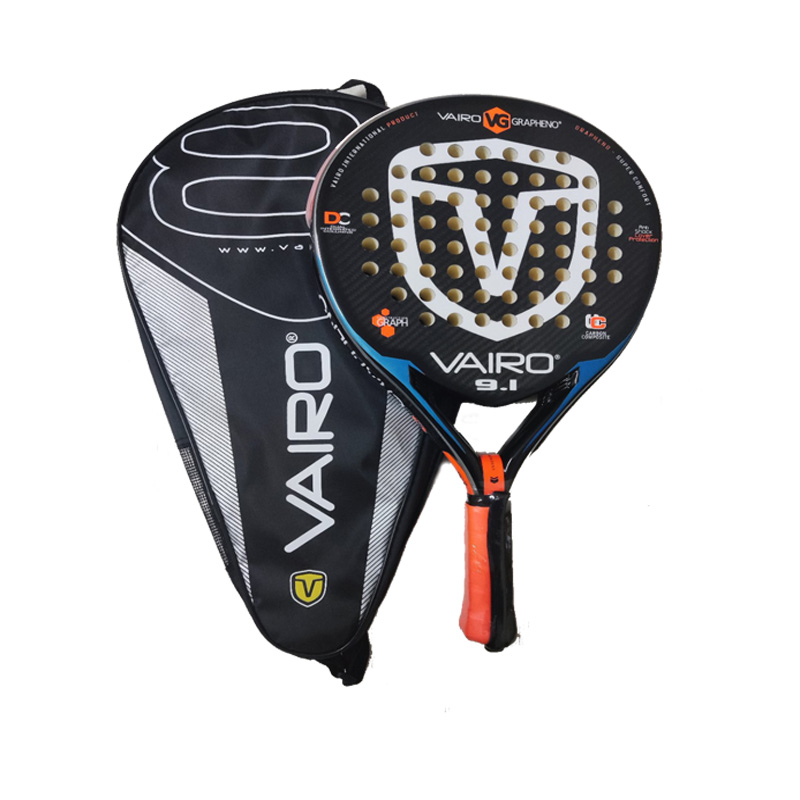
Gripping a paddle racket is an important skill for any player in racquet sports such as pickleball and platform tennis. The right grip can provide optimal control and power, while the wrong grip can lead to discomfort, lack of control, and injury. In this article, we’ll take a closer look at how to grip a paddle racket and some tips for finding the right grip for your style of play.
Types of Grips
There are several types of grips that players can use when holding a paddle racket. The most common grips are the Eastern, Western, and Continental grips.
The Eastern grip is the most common grip used in racquet sports. In this grip, the player places their hand on the handle with their index finger extended along the top of the handle. The other fingers wrap around the handle, and the thumb is placed on the back of the handle.
The Western grip is similar to the Eastern grip, but the hand is rotated slightly, so the index finger is pointing more towards the head of the racket. This grip is used by players who prefer a more aggressive and powerful style of play.
The Continental grip is a less common grip and is often used for specific shots such as serve and volley. In this grip, the player places their hand on the handle with the index finger pointing diagonally across the handle. The other fingers wrap around the handle, and the thumb is placed on the back of the handle.
Hand Position
The position of the hand on the handle is another critical factor in gripping a paddle racket. The hand should be placed on the handle, so the heel of the hand sits comfortably against the butt cap. The fingers should wrap around the handle, and the thumb should be placed on the back of the handle.
The position of the hand on the handle can affect the amount of power and control a player can generate. A grip that is too far towards the top of the handle can reduce power, while a grip that is too far towards the bottom of the handle can reduce control.
Grip Pressure
The amount of pressure applied to the grip is another important factor in gripping a paddle racket. Grip pressure can affect the amount of power and control a player can generate and can also impact their comfort and stamina during a match.
Players should aim to grip the paddle racket firmly but not too tightly. Gripping the racket too tightly can lead to tension in the arm and hand, which can lead to discomfort and fatigue. Gripping the racket too loosely can lead to lack of control and power.
Finger Placement
The placement of the fingers on the grip can also affect the amount of power and control a player can generate. The fingers should be evenly spaced on the handle, and the fingertips should rest lightly on the grip.
The placement of the index finger can be particularly important in generating power and control. The index finger should be extended along the top of the handle, providing a stable base for the other fingers. The other fingers should wrap around the handle, providing support and control.
Wrist Action
The wrist is another critical factor in gripping a paddle racket. The wrist should be relaxed and flexible, allowing for smooth and controlled movements. Players should aim to keep the wrist stable and in line with the forearm for most shots. However, some shots may require more wrist action, such as a backhand shot in pickleball. In these cases, players should use the wrist to generate power and spin, but they should still aim to maintain control and stability.
Experimentation
Finding the right grip for your style of play can take some experimentation. Players should try out different grips and hand positions to see what feels most comfortable and effective. They should also pay attention to the amount of power and control they can generate with different grips and hand positions.
Players can also experiment with grip modifications, such as adding grip tape or changing the size of the grip. Grip tape can provide extra grip and comfort, while a larger or smaller grip can provide better control and comfort.
In conclusion, gripping a paddle racket is an important skill for any player in racquet sports. Players should aim to find the right grip and hand position to provide optimal control and power while maintaining comfort and stability. Experimentation with different grips, hand positions, and modifications can help players find the right grip for their style of play. With the right grip, players can optimize their performance on the court and enjoy a more comfortable and effective playing experience.

